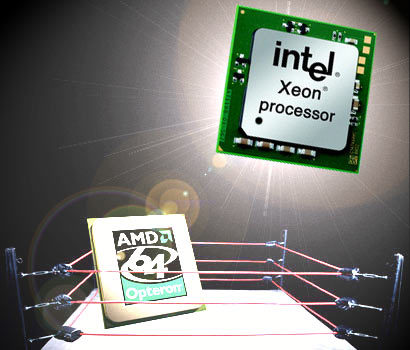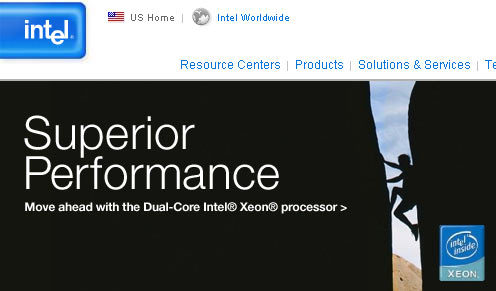Intel's Next-Generation Server Promises
Can Bensley Make Up For Xeon's Flaws?
The reason why Intel wouldn't agree to a dual-core comparison test is simply a matter of processor performance. While even the upcoming dual core Xeons won't make much of a difference, the future holds much promise, as the Bensley platform will represent a significant departure from the Xeon architecture.
Although Intel's architecture still clearly dominates the x86 server market, AMD's Opteron has represented more than just an annoyance for Intel since its introduction in April 2003. In a nutshell, Opteron offers better computing and per-Watt performance at a roughly equivalent per-device price and it scales much better when moving from one to two or even four CPUs. AMD's performance lead is equally large when compared to Intel's new dual-core Xeon devices.
Intel's new Xeon dual core processor, which runs at 2.8 GHz, is based on Intel's 90-nm process and, you guessed it, offers NetBurst, including HyperThreading support. A dual-core processor with beefed up 2x 2 MB L2 cache, its performance certainly is solid enough for the target market. However, a dual-core duel, as AMD has been trying to provoke, would be a potential nightmare for the product management staff at Intel's enterprise group.
The Lindenhurst chipset family (E7520/E7320) for Xeon processors has two major handicaps. On the one hand, both dual processor CPUs have to share one front side bus and one memory array. On the other hand, Intel's registered DDR2 memory for servers does not really offer any advantages compared to DDR1 memory. Finally, why should you thus invest in a server system that will be outdated in a few months?
A server purchase decision is usually driven by reliability, availability and serviceability issues rather than maximum performance. From this point of view, AMD still has a long way to go, because the top gun OEMs such as Dell, Fujitsu-Siemens, HP/Compaq, IBM and Toshiba are to a large degree locked in with Intel.
But the ranks are growing, as AMD used to say at different occasions, and Intel must act now in order to protect its lucrative server CPU business. While salvation by means of the Woodcrest server processor is still almost a year away, the next platform-generation Bensley will knock on our doors early next year already. The good news here is that the Bensley platform will not only introduce several architectural improvements such as a new memory controller, independent buses for each CPU and nice upgrade paths. But it will also be able to run either the upcoming 65-nm dual core Xeon processor, called Dempsey, as well as the next-generation Woodcrest.
Intel's new dual core Xeon indeed offers superior performance - as long as you compare it to its single- core counterparts. However, AMD offers even faster chips both for single and dual-core applications.
Get Tom's Hardware's best news and in-depth reviews, straight to your inbox.
Current page: Can Bensley Make Up For Xeon's Flaws?
Next Page Intel's Server Roadmap Explained
Patrick Schmid was the editor-in-chief for Tom's Hardware from 2005 to 2006. He wrote numerous articles on a wide range of hardware topics, including storage, CPUs, and system builds.

